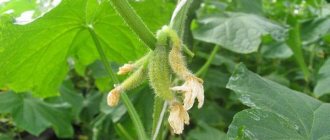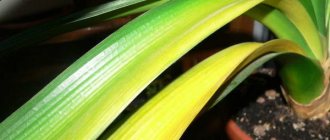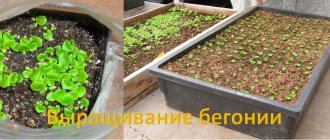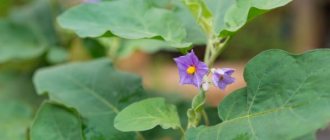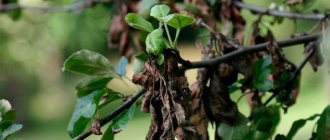Watering
Drooping foliage is a sign that the crops are lacking something. It is important to correctly understand what exactly is wrong with the plant. If you delay, you may lose your harvest. The most common mistake that leads to cucumber leaves withering in a greenhouse is improper watering. This includes both lack and excess of moisture.
Note! Cucumbers love water and need regular watering. If there is not enough moisture, the plant's leaves begin to turn yellow. They become soft.
If there is too much moisture, then the soil cannot dry out, and water stagnates in the root system. It creates conditions that are very favorable for the development of fungal diseases. A mistake in irrigation is using cold water:
- It promotes the development of root rot.
- Because of this disease, the plant's root system stops functioning.
- Water and nutrients are not delivered to the leaves and stem. If you do not intervene, the plant may die.
For growth and development, cucumber bushes need to receive a sufficient amount of nutrients. It is important to give them mineral supplements. Nitrogen promotes the growth of greenery, potassium and phosphorus are responsible for the processes of flowering and fruiting. If the soil contains too little nitrogen, but a lot of potassium and phosphorus, then the bush is characterized by abundant inflorescences and fruits. However, the leaves fade, they are pale and soft. New ones do not grow or are poorly formed. If cucumbers wither in the greenhouse, you need to reconsider the feeding.
Causes of leaf wilting
Problems with the root system
- Mechanical damage
- Root system rotting
- Fungal diseases
Leaf and stem problems
- Pests
- Viral diseases
Bad landing spot
- Bad neighborhood
- Dense planting
- Improper watering
We figured out the main reasons. But to get rid of the enemy, you need to know him by sight. That is why, below we will take a closer look at each of the dangerous factors.
Place of landing and diseases
If the seedlings were planted in the wrong place, this will affect the plants in the summer. There are only two reasons why the planting site may be unsuitable and, as a result, the leaves on the cucumbers wither:
- Plants may be exposed to direct sunlight. Although they love light, direct sunlight is harmful to them. This is explained by an increase in the rate of moisture evaporation from the leaf surface. Cucumber bushes are trying to resist this. Their leaves curl into tubes, thereby reducing the area of evaporation. Cucumbers die in the sun, they simply dry out.
- The seedlings do not receive sun and are in the shade. If the bed is closely planted, the bushes shade each other. When they grow, a situation is created in which some lashes find themselves completely without light. The leaves of cucumbers turn yellow and wither, as in the video.
Disease and insect pests are another common cause of wilted cucumber leaves. If we talk about diseases, then this is a symptom characteristic of fungal diseases. At the same time, the development of the disease and the impact of pests rapidly affect the plantings. If measures are not taken, the plant may die completely in a few days. Cucumbers in a polycarbonate greenhouse are also susceptible to pests.
If the leaves of cucumbers in a greenhouse wither, a thorough examination of the cucumber bushes will tell you what to do. Among the most common diseases are:
- root rot;
- fusarium;
- white rot.
Diseases of cucumbers in the greenhouse and in the garden are similar, and their treatment is identical. With root rot, the lower foliage wilts and dries out, as in the photo, then the death of the entire bush occurs. If fusarium develops, the upper part of the plant withers and the lower part of the stem rots. If white rot develops, the foliage becomes very soft and brown spots appear on the stem. Subsequently the foliage falls off. The most common problem with the development of fungal diseases occurs in those cucumber bushes that grow in greenhouses. This is explained by the favorable conditions in the greenhouse for the development of fungi in the vines of cucumbers.
Note!
The most active insect pests of cucumbers are melon aphids and spider mites. Aphids behave secretly. This insect lays its eggs on the back of the leaves; they become lethargic, dry out and die. Spider mites also prefer the underside of leaves. There they build their mini-webs.
Features of cucumber diseases
Many diseases affect cucumber crops, regardless of where they grow. However, some species prefer to localize in certain places with a climate more suitable for their development.
In the greenhouse
In greenhouses and greenhouses, cucumbers are most often exposed to infectious diseases. Favorable factors for them are:
- Old perennial soil;
- Artificial microclimate;
- Lack of nutrition;
- Poor agricultural technology;
- Excessive watering.
To avoid many diseases, when growing cucumbers in greenhouses, you need to follow the following recommendations:
- Cucumbers are not planted after squash crops;
- Greens are sown in places where beans, tomatoes, and potatoes grew;
- Watering is carried out only at the root, with warm water;
- Tying up bushes will help prevent infection from the soil;
- After harvesting vegetables and before planting, greenhouses, soil and equipment are thoroughly disinfected.
In the open ground
It is easier to grow cucumbers in open beds, since there is no need to create a microclimate and stagnation of moisture in the soil is not expected. It is only important that there is sufficient lighting and correct crop rotation.
Even cucumbers that are completely healthy at first glance can suddenly begin to fade. The reason for this may be untreated seeds. Also, you should not forget to treat the soil in the areas with chemicals and traditional methods to prevent diseases.
In open areas, many diseases are carried by insects, winds, and rain. These are mainly fungal spores, but they show up weakly on the ground - the conditions here are not typical for them. The most common diseases of cucumbers in garden beds are viruses and infections.
Chemicals and the wrong neighborhood
Cucumber bushes react very sensitively to the use of chemicals, especially herbicides. Accidental contact of their particles on the leaf blades can cause the foliage to wither and look lifeless.
If cucumbers have wilted in a greenhouse, then you need to understand that they are picky about the plants that are their neighbors in the beds. The worst pairings are cucumbers and tomatoes. This is easy to explain. Cucumbers are absolutely not suitable for the conditions necessary for the normal growth and development of tomatoes. To avoid an epidemic of late blight in tomatoes, you need to provide them with low levels of air and soil humidity. If you keep cucumbers in these conditions, they will experience a serious lack of moisture and subsequently wither. If the greenhouse is small, then it is better to grow only cucumbers in it, without introducing other species.
Incorrect landing
These are the mistakes you may encounter at the very first stage of working with a cucumber.
Cucumber gets along with most vegetable crops. However, there are several that cucumbers should never be planted next to. The result of such placement will be either a small harvest or its complete absence.
For example, you should not plant seedlings next to zucchini. Also, cucumber is not the best neighbor for tomatoes. Their powerful root system deprives the plant of the necessary energy.
Weevil on strawberries - how to fight the pest, how to treat strawberries and means to get rid of insects (105 photos)
How to treat raspberries against pests: traditional methods for processing raspberries and a description of the most dangerous insects (130 photos and videos)
Currant leaves curl, what to treat - what to do first and finding the cause of the problem (115 photos)
If you plant cucumbers too close to each other, then after some time they will begin to compete, since there will not be enough sun or minerals for everyone.
What to do: cucumbers wither in the greenhouse and on the beds
Initially, you need to determine the reason why cucumber leaves wither in the greenhouse and open ground, and then begin to fight.
If the bushes lack moisture, they need abundant watering. After it, the leaves will get stronger and tone up. In the future, it will be important to water regularly (once every two days). In this case, moisturizing should not be too abundant. You can water cucumbers only:
- warm;
- settled water.
If the soil, on the contrary, is excessively wet, watering should be interrupted. It will need to be renewed only after the soil has thoroughly dried out.
By the way, if the cucumbers are overgrown, then you can make delicious preparations from overgrown cucumbers for the winter.
If fertilizing cucumbers has been done for a long time, it is recommended to add nitrogen-containing fertilizer to the soil. It is important to remember that they respond much better to organic fertilizers. They don't like chemical compounds. To enrich the soil with nitrogen, you can use:
- urea;
- yeast solution;
- wood ash.
Those cucumbers that are directly exposed to sunlight need to be shaded. This can be done using a number of available tools. Perfect for:
- cardboard sheets;
- branches;
- bags.
You can buy special material for covering plants.
Advice!
Beds that are too intensively planted need to be thinned out. This can be done by tearing off dry foliage and trimming overgrown lashes. As a radical measure, you can remove by the roots those vines that strongly shade the remaining ones.
If herbicides get on the leaves, the plants need to be bathed in water. This will wash the chemicals off the leaves.
If the plant becomes sick with a fungal infection, then the first thing you need to do is get rid of the affected leaves. If the scale of the damage is serious, then you need to remove the lashes, and in some cases, the entire bushes. The next step is to treat the plantings using special biological agents. You can process:
- Trichodermin;
- Planriz;
- Fitosporin.
Perhaps tracheomycosis wilting of cucumbers has occurred and the lower leaves are affected. In case of serious damage, you will have to resort to the use of chemicals; you can treat:
- Topsin-M;
- Previkur.
You may be interested in:
How to keep fresh cucumbers in the refrigerator longer - timing and methods Cucumber is a healthy and juicy vegetable, but unfortunately, it is quite perishable if you do not follow the rules for storing it in...Read more...
Spraying plants with a special mixture can also help. To prepare it, you will need to mix Metronidazole and Streptomycin in a one to one ratio. Dissolve the resulting mixture in five liters of water.
There are a large number of methods to combat insects, after which they disappear. The following are recommended as traditional methods for cucumbers:
- use of soap solution;
- treatment with an infusion made from onion or garlic peels.
Biological insecticides have also proven their effectiveness in the fight against yellowed greens. Among them it is worth highlighting:
- Arrow;
- Fitoverm;
- Aktofit.
In case of serious pest infestations, you should resort to separate chemical assistance. For dried foliage of cucumber bushes, it is recommended to use Iskra, Kinmiks or Intavir.
Problems with the root
As was said, often the reason why cucumbers wilt is a disease of the underground part of the plant.
Root injury may occur when attempting to install stem fixation devices. When driving a stake into the ground next to the stem, the root system is at risk. A young plant can not only wither as a result of such machinations, but even die.
Rotting of the root system, associated with excessive watering and lack of ventilation (in the greenhouse), also negatively affects the health of cucumbers.
The appearance of fungus is mostly a side effect of increased humidity or a sudden change in temperature. These factors cause active proliferation of the microorganism in the root, which is why cucumber leaves wither.
Prevention
An important factor is the implementation of preventive measures for bushes and soil. The following actions can help avoid wilting of cucumbers:
- Maintaining correct crop rotation. The place where cucumbers are planted needs to be changed periodically (every two to three years). The correct choice of predecessors is important. Cucumbers grow well after eggplants, cabbage, legumes, onions, etc.
- The choice for planting is not in the shade, but without direct sunlight.
- Planting seeds or seedlings using a 0.5x0.5 m pattern.
- Using a manganese solution to treat seeds and soil.
- Mulching the beds after planting.
- Regular watering with warm water.
- Preventive treatment with insecticides.
- Timely feeding.
Note!
These steps will protect crops from wilting and help you get a good harvest of gardeners’ favorite product.
Wilting of cucumber leaves is the first alarm bell about any problem. It is important not to delay, but to correctly determine what exactly went wrong and begin to eliminate the problem. If yellowed leaves have been treated with chemicals, they need to be cut off.
How to keep picked cucumbers from wilting
There are several ways to keep picked cucumbers fresh for as long as possible:
- In the refrigerator: 20 days at +1...+2°C, 15 days at +4...+8°C, 7 days at +15°C.
Storage packaging: a plastic bag, not completely filled, but tightly closed, a plastic container (preferably vacuum), and wrapping each cucumber in white paper or cling film.
- In a glass jar (in a vacuum). Place the washed and dried fruits tightly into a sterilized glass jar. To create a vacuum, a small candle is used, which must be lit directly in the jar. After 5 minutes of burning the wick, the container must be closed with a lid. The candle will go out when there is no oxygen left inside. In such a vacuum container and in a cold place, vegetables can be stored until the end of winter.
- In the egg white, which should be applied to each vegetable, previously wiped clean and dry. The dry protein turns into a film, which serves as a sealed vacuum wrapper. In such individual packaging, the fruits remain fresh for 1-2 months.
You will be interested to know why cucumber ovaries turn yellow and how to deal with it.
The following preventive measures will help prevent cucumber leaves from wilting:
- Adhere to proper crop rotation: do not plant cucumbers in the same place. It is better to plant them after suitable predecessors: tomatoes, eggplants, potatoes, onions, legumes, spinach, white cabbage (early), cauliflower, beets, carrots, greens.
- Choose a place for planting that is not shaded and at the same time not exposed to direct sunlight.
- Plant seeds or seedlings according to a 50x50 cm pattern.
- Treat seeds and soil with a solution of potassium permanganate to prevent diseases and against insects.
- After planting, mulch the beds to retain moisture in the soil, protect against weeds and insulate the roots.
- Water the bushes with warm water every 2 days, and daily in hot summers.
- Spray with insecticides for prevention.
- Timely feed plants with nitrogen-phosphorus-potassium mineral fertilizers or organic matter.
By taking such steps, you can protect cucumbers from leaf wilting not only during the growing season, but also during fruit ripening. Cucumbers are favorite vegetables that are everywhere on the table in fresh or canned form. But when growing these capricious plants on your site, you must adhere to certain rules in order to successfully reap a good harvest.
Root rot of cucumbers
Root rot is a disease of extremes. As a result of abundant watering, soil moisture increases, and there is less and less air in it. The root system of cucumbers weakens and becomes vulnerable to phytopathogens. This is also caused by a high concentration of salts in the soil and drying out of the root system. The causative agents of the disease first settle in weak and dead areas, and then are mistaken for healthy plant tissue. In other words, it is easier for cucumbers to contract root rot than to avoid it.
| Photo | |
| Signs | The stem becomes thin and dries out. When digging up the plant, it is clear that the neck and root system are affected by brown burn spots. In hot weather, leaves wither and die. The roots and stem become rotten and darken. |
| Activity period | Almost the entire season. |
| How is it formed | Unfavorable growing conditions, errors in agricultural technology. |
| Which cucumbers are amazing? | Any growing in closed ground conditions. The appearance of rot in open ground plantings is also possible. |
| Result | When the roots are damaged, the above-ground part of the plant also dies. The earlier the infection occurred, the higher the likelihood of the entire crop dying. The fruits grow weak and underdeveloped. |
| Control measures | 1. Renew the soil before each season. 2. Water only with warm water. 3. Dust the lower part of the plants with chalk, sawdust, sand or peat. 4. Preventive treatment (soaking) of seeds before sowing and spraying during the growing season with a solution of the drug Fitosporin-M; watering the root with Sporobacterin, Fitolavin. 5. Removing the diseased plant from the garden bed. 6. Reducing the intensity of watering, applying bleach (150-200 g per 1 sq.m.) and loosening with a rake. |
Cucumber varieties resistant to root rot: Advance F1, Benefit F1, Orlik F1, Valdai F1, Maisky F1, Yarmarochny F1, Tsygan F1.
Folk remedies in the fight against pests and diseases
In a greenhouse, cucumber lashes can be destroyed by aphids, spider mites or whiteflies. A simple folk remedy made from onion peels and soap shavings will help fight pests:
- Collect as many onion skins as possible. It can be harvested all winter and then used to treat diseases.
- Pour hot water over a glass of husk, let it brew for a couple of hours, pour into 5 liters of water.
- Grate half a bar of soap.
- Add to the onion infusion and process the vines.
If you notice that the greens of the cucumbers have begun to fade, then ash will help restore the tugor: 100 grams of ash, pour a bucket of boiling water, let it brew for one day. Strain the solution, then rub laundry soap into it and treat the bushes.
Many gardeners save whips from fungal diseases with whey. Mix two liters of whey with 2 liters of water, spray each lash on all sides.
Milk and iodine will help get rid of harmful bacteria. The drug is considered to be a remedy that stimulates plant growth and strengthens their immunity. In the same case, iodine acts as a protector against diseases and wilting of borage.
To prepare the solution you will need iodine and milk, preferably homemade. In a bucket of water, dilute 30 drops of iodine, 1 liter of milk and half a piece of tar or laundry soap. Spraying of vines should be carried out on all sides every 2 weeks.
Another folk remedy will help against yellowing: take 350 g of potato tops, pour a bucket of hot water, add soap. After 3-4 hours you can spray the vegetable plantings.
How to use baking soda
For many gardeners, soda is a real salvation for cucumbers from all problems.
- Baking soda is used as a disinfectant for seeds. Make a weak soda solution, then soak the seeds for 20 minutes, dry them slightly, then plant them in the soil.
- If you notice pests, then twice a week the beds with cucumbers are watered with the following soda solution: 2-3 tbsp per 10 liters of water. l. soda There is no need to overfeed; dilute the soda strictly according to the recipe.
- The foliage is sprayed with the same solution. This is a good prevention against pests. You can spray it on the stems and fruits.
- For the appearance of ovaries, 2 feedings are carried out. The first is 2 weeks after planting the seedlings. The second one 14 days later.
- When barren flowers form, another feeding is carried out.
- Treat against powdery mildew at the first sign of white plaque.
Non-infectious diseases of cucumbers ↑
Non-infectious diseases arise when technological methods of growing crops are violated and do not spread to nearby plants. When the unfavorable factor changes, the disease disappears without harming neighboring plants. Non-communicable diseases include:
- unfavorable environmental conditions for cucumber culture,
- low or high temperature, air humidity,
- insufficient or excessive supply of nutrients,
- use of herbicides and other chemicals.
Our favorite cucumbers
Cucumbers are a crop of tropical climates, but resistance to heat must be accompanied by a certain ratio of air and soil temperatures. When cucumbers are grown on a windowsill with a hot radiator under it, limp leaves cause overheating of the plants. If the air temperature is close to +30..+35°C (critical) and higher, then the roots located in the top layer of soil also overheat and cannot provide the leaves with the necessary amount of nutrient solution.
For normal functioning they require a temperature range within +17..+20°C. A stressful state leads the plant to physical dehydration. In greenhouse conditions there may be excessive dryness of the air. Cucumbers cannot tolerate watering with cold water, especially when overheated. Plants get sick. Provide cucumber plants with a normal microclimate and they will come to life.
A shade net partially protects plants from overheating in the greenhouse.
Often plants get sick from one-sided nutrition. There is a lot of nitrogen and a lack of phosphorus or a violation of the ratio of basic nutrients, when the element is in the soil, but is not available to the plant. Normalization of nutrition returns the plant to a healthy appearance and restores all functions.
It is possible to correct a nutritional disorder once the cause is identified, because sometimes a lack of one of the nutrients is confused with the onset of an infectious disease. To prevent this from happening, pay attention to the nutritional disorder, which is easy to identify by external signs.
Change in color of cucumber leaves due to lack of nutrients
How to find out why cucumber leaves wither?
A deficiency of microelements (in particular, manganese and iron) is indicated by yellow streaks that form on the surface of the leaves. If such a problem is observed on young shoots, then this indicates a lack of copper. And yellowing of the edges of the leaves is characteristic of a deficiency of potassium and magnesium.
See also
Why do cucumber leaves turn yellow on the windowsill, what to do and how to treat it
Read
With insufficient watering, cucumber roots appear on the surface of the ground. Due to abundant moisture, the leaves first turn yellow and then rot. When diseases occur, characteristic spots of white or another shade appear on the shoots. By the color of such formations, you can determine the type of infectious pathology that has affected the plant.
